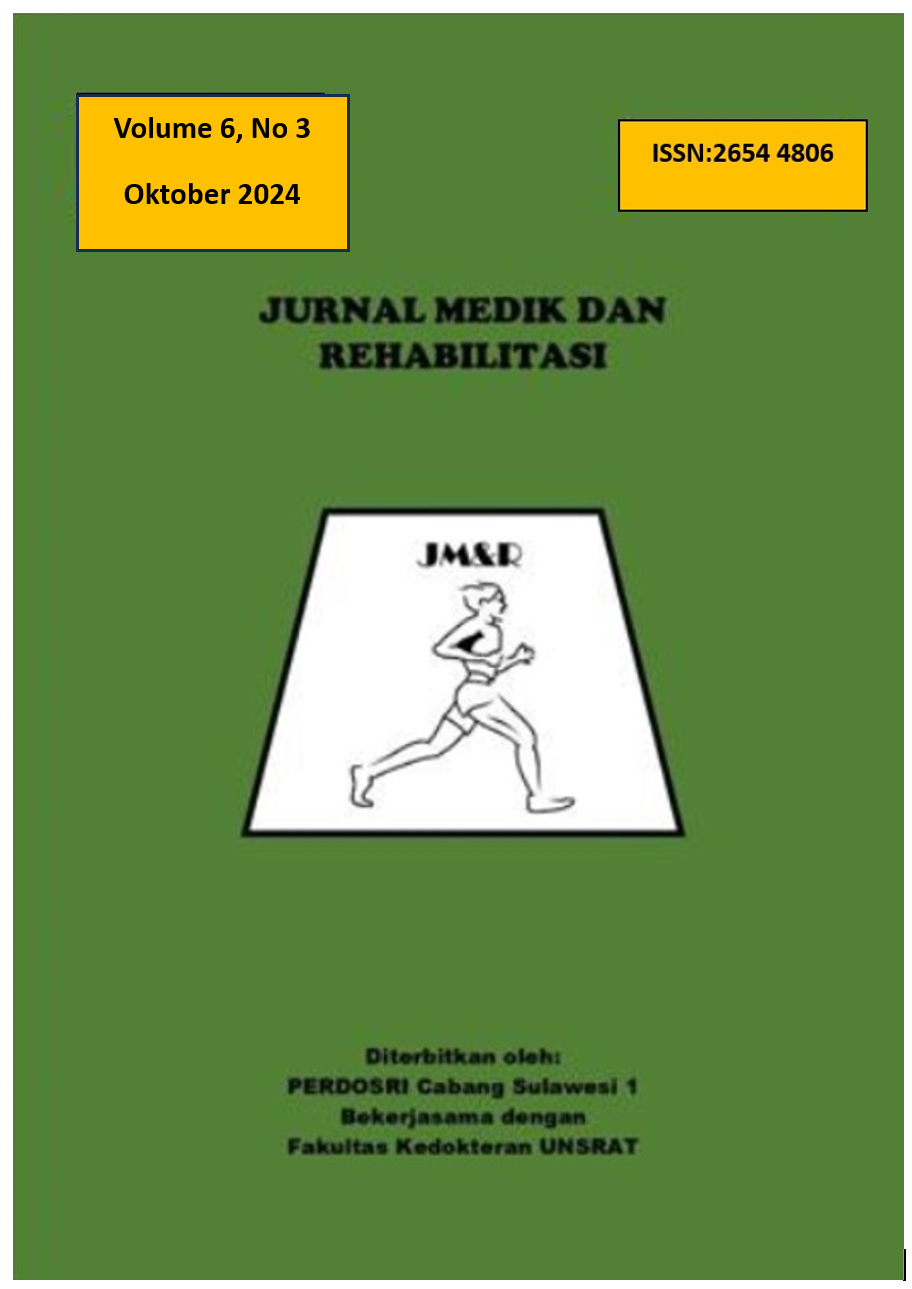MEDICAL REHABILITATION IN PATIENT WITH CONGENITAL MUSCULAR TORTICOLLIS
Abstract
ABSTRACT :. Torticollis is one of the most common types of head and neck posture abnormalities in
infants. The research method used is an observational study through observation of patients. The head tilted to
the right has been known by the patient's parents since the patient was 4 months old. Torticollis was first defined
by Tubby in 1912 as a deformity, either congenital or acquired, characterized by lateral tilt of the head to the
shoulder, with torsion in the neck and deviation of the face. The term congenital muscular torticollis (CMT)
indicates a neck deformity involving shortening of the sternocleidomastoid (SCM) muscle that is detected at birth
or shortly after birth. The term torticollis comes from Latin, from the word torquere meaning bent, and collum
meaning neck and is a clinical sign of a bent or twisted neck that can be acquired or congenital. Congenital
muscular torticollis (CMT) or also known as wry neck, fibromatosis colli and twisted neck ranks third as a
congenital musculoskeletal disorder in neonates after hip dislocation and clubfoot and is characterized by lateral
flexion of the head towards the affected side and cervical rotation to the opposite side due to unilateral shortening
of the sternocleidomastoid (SCM) muscle, which is detected at birth or soon after.

